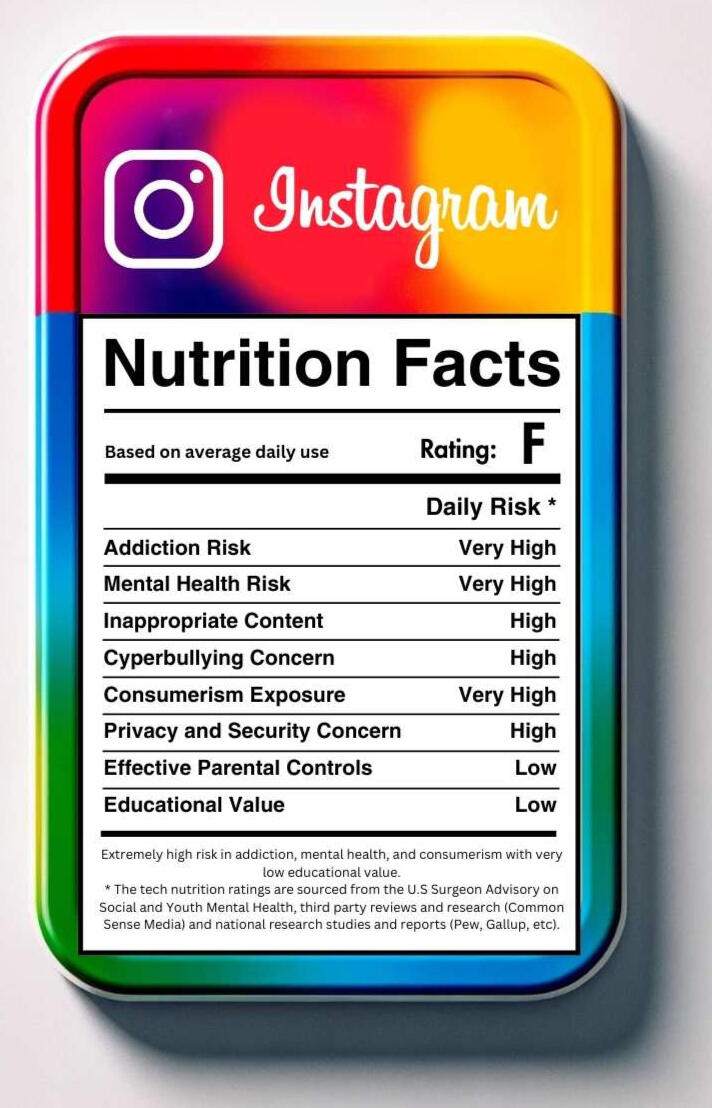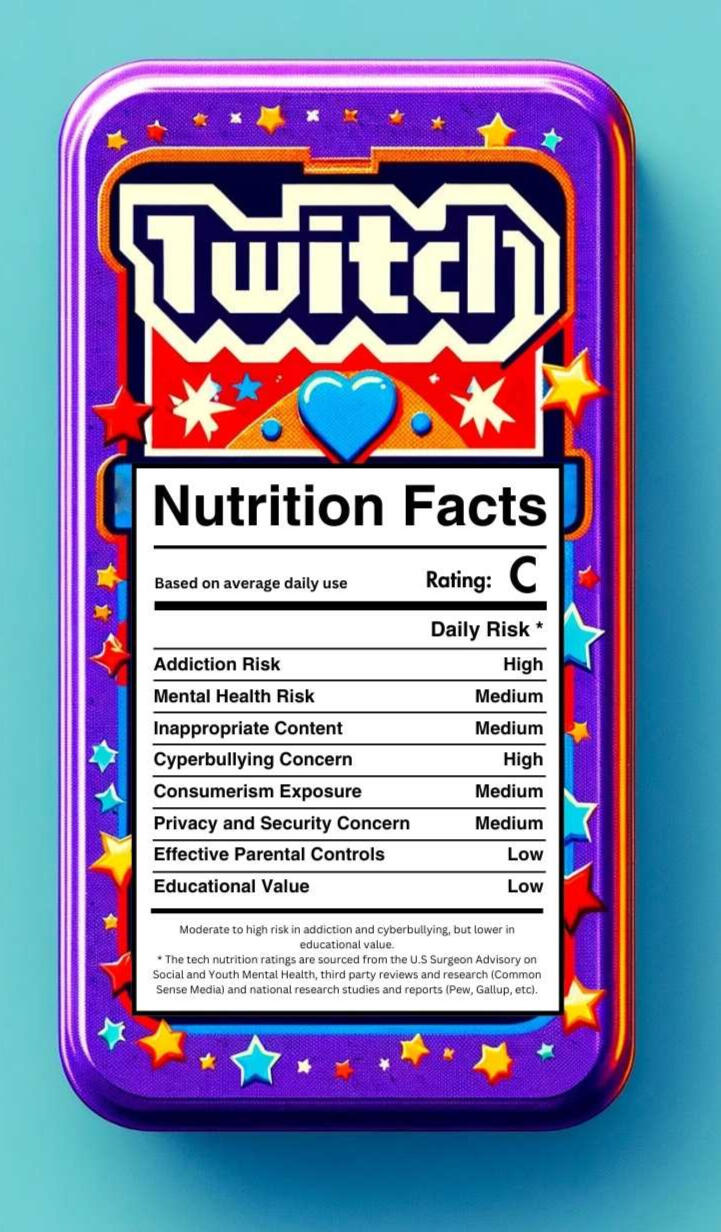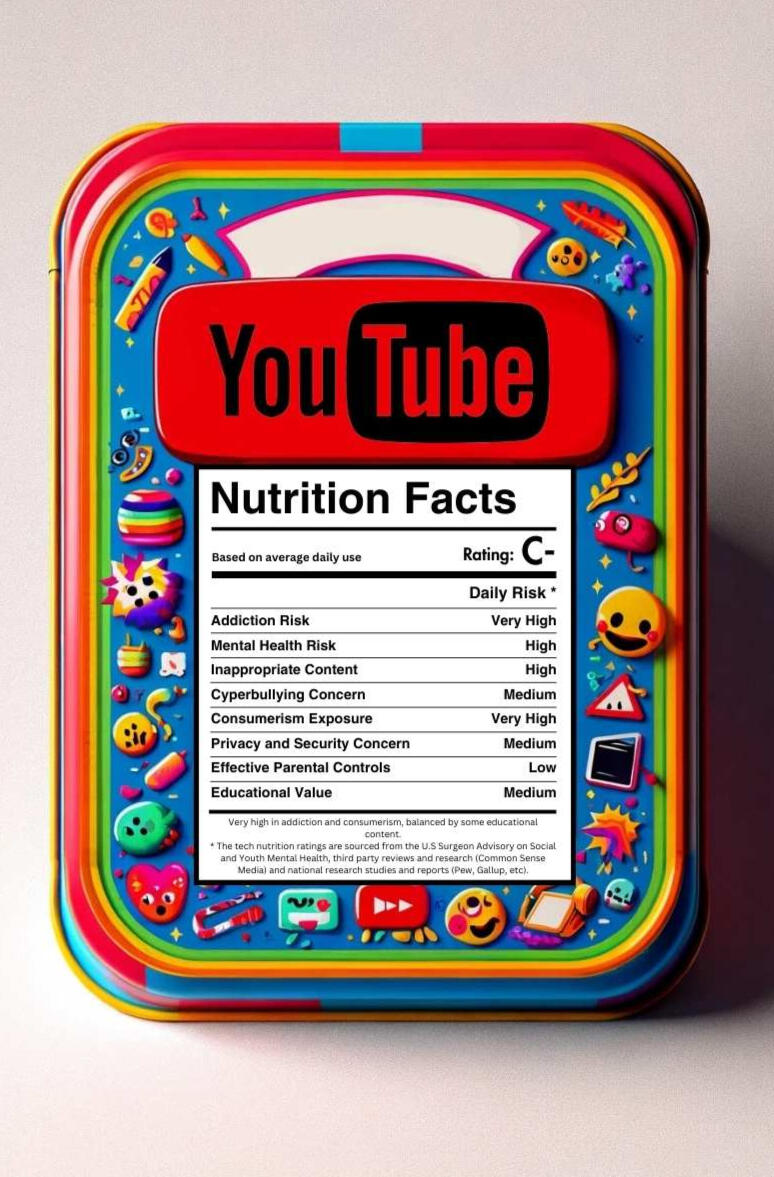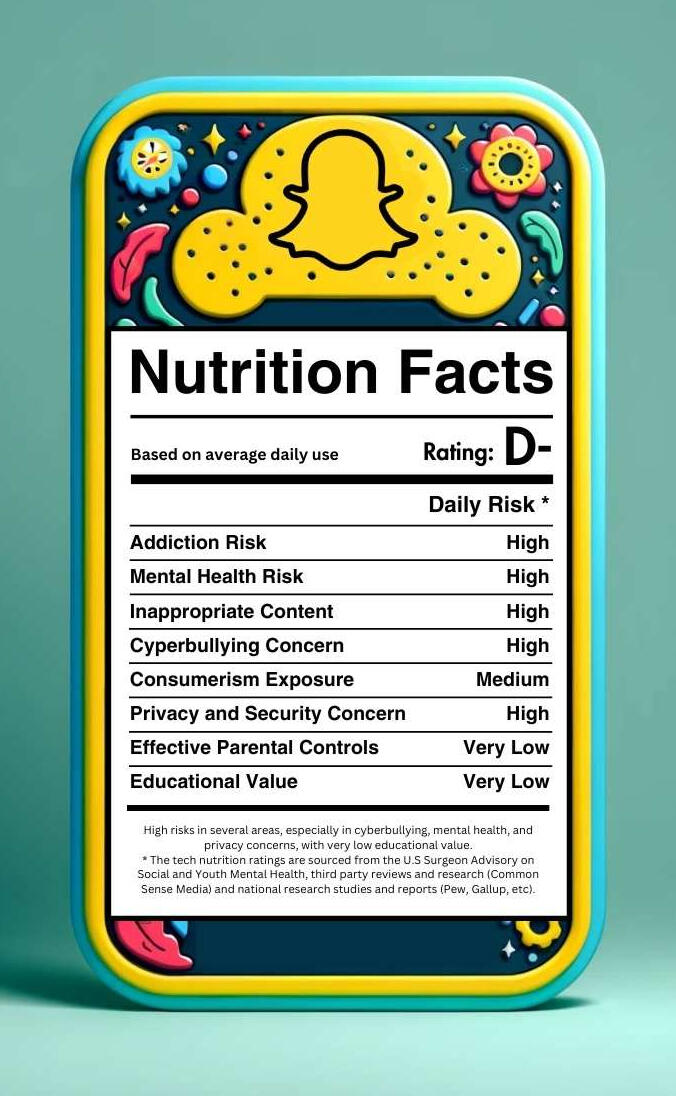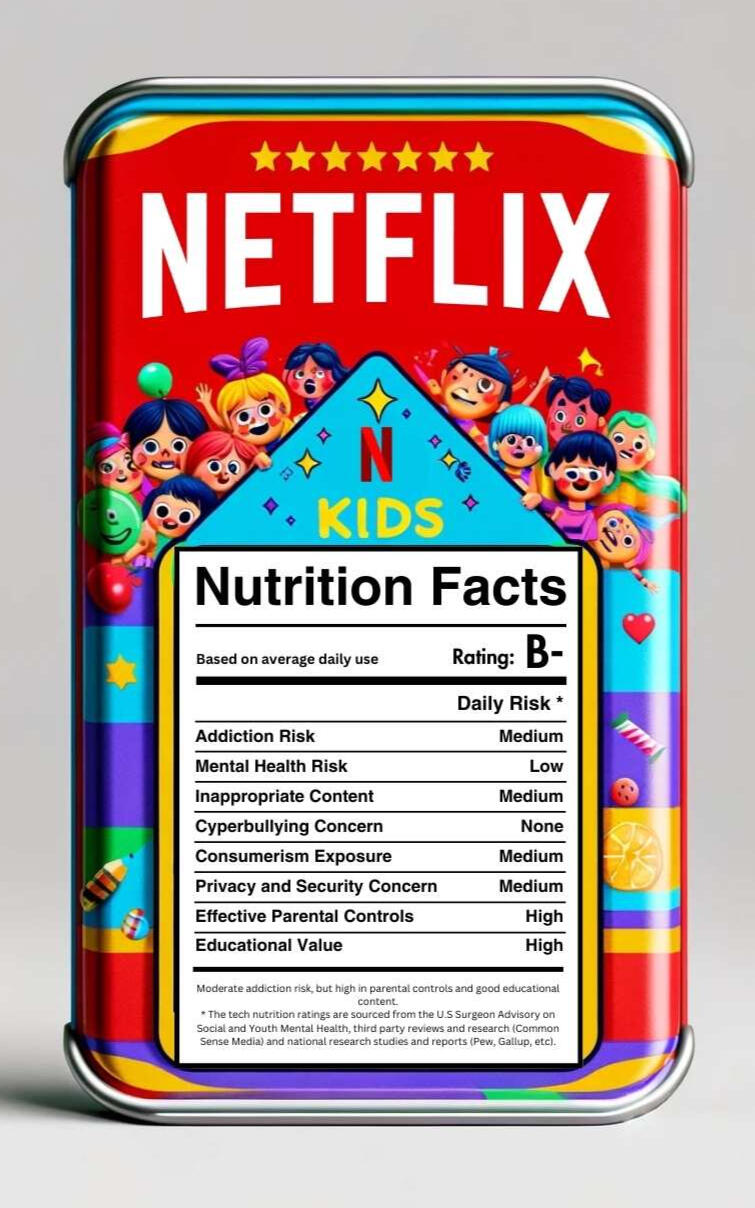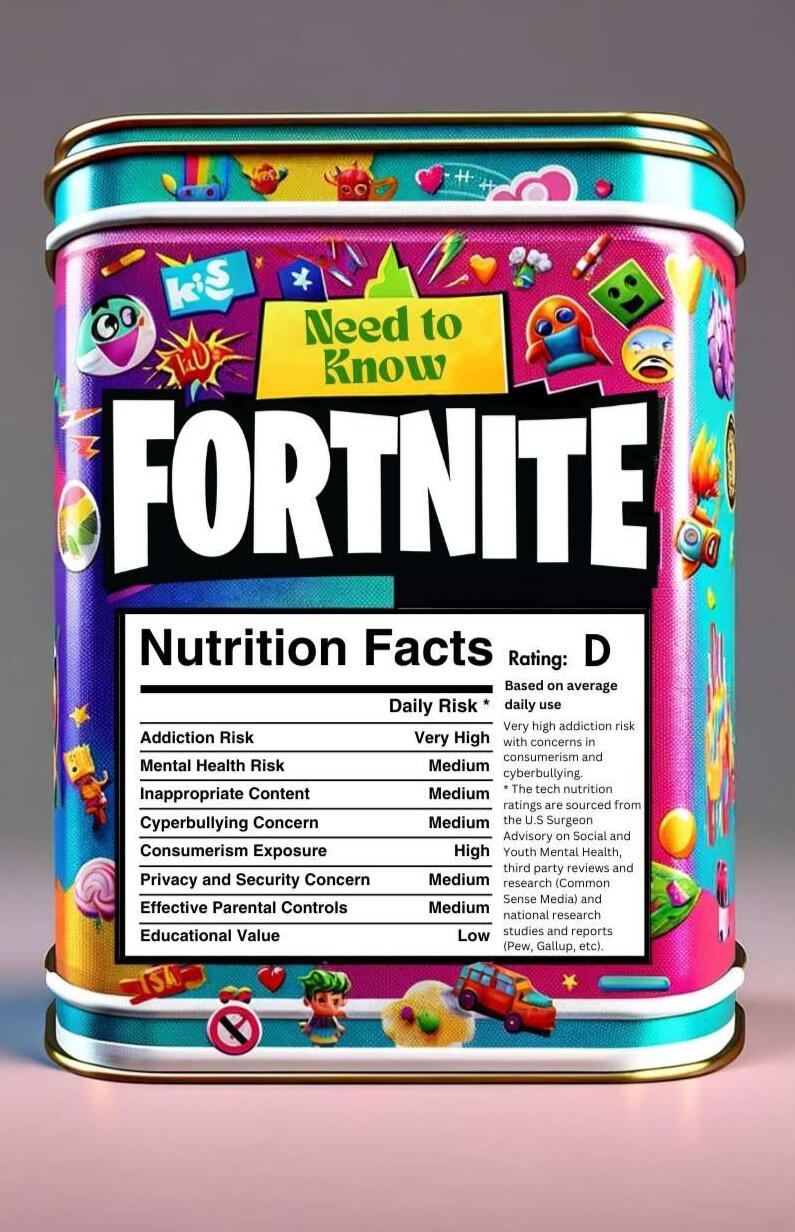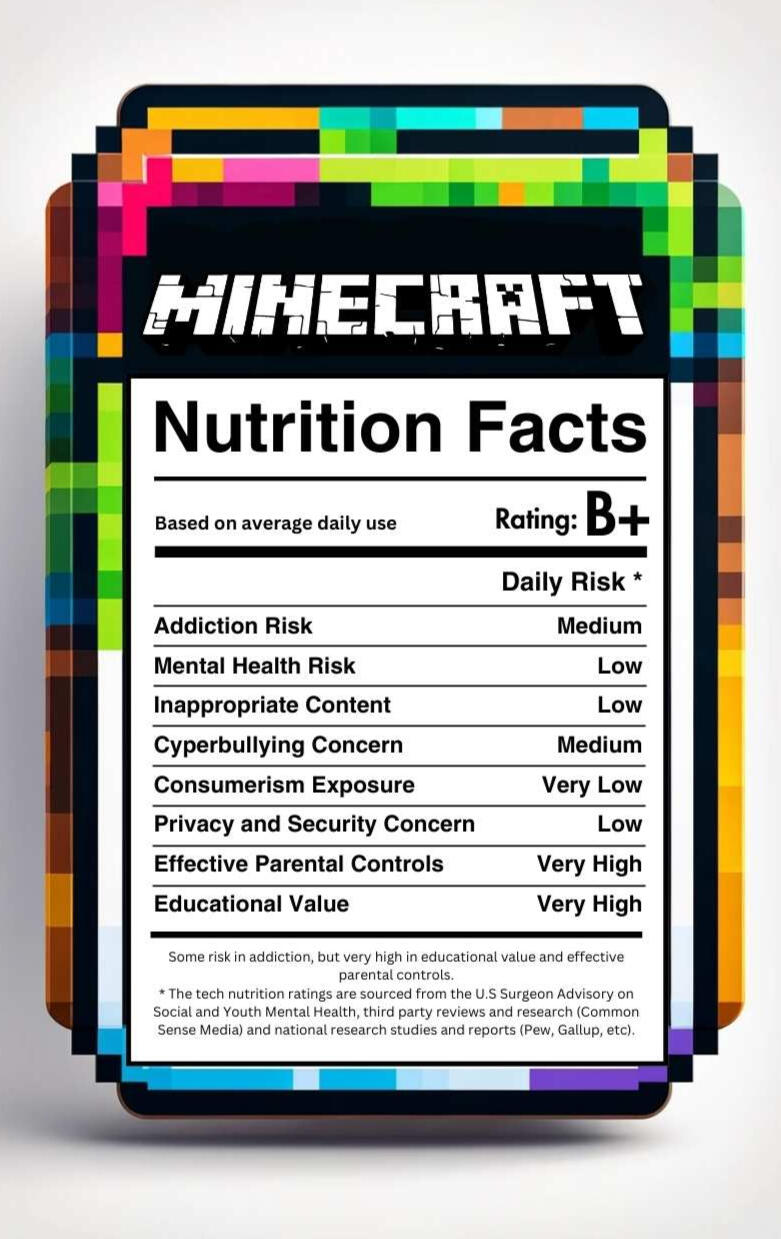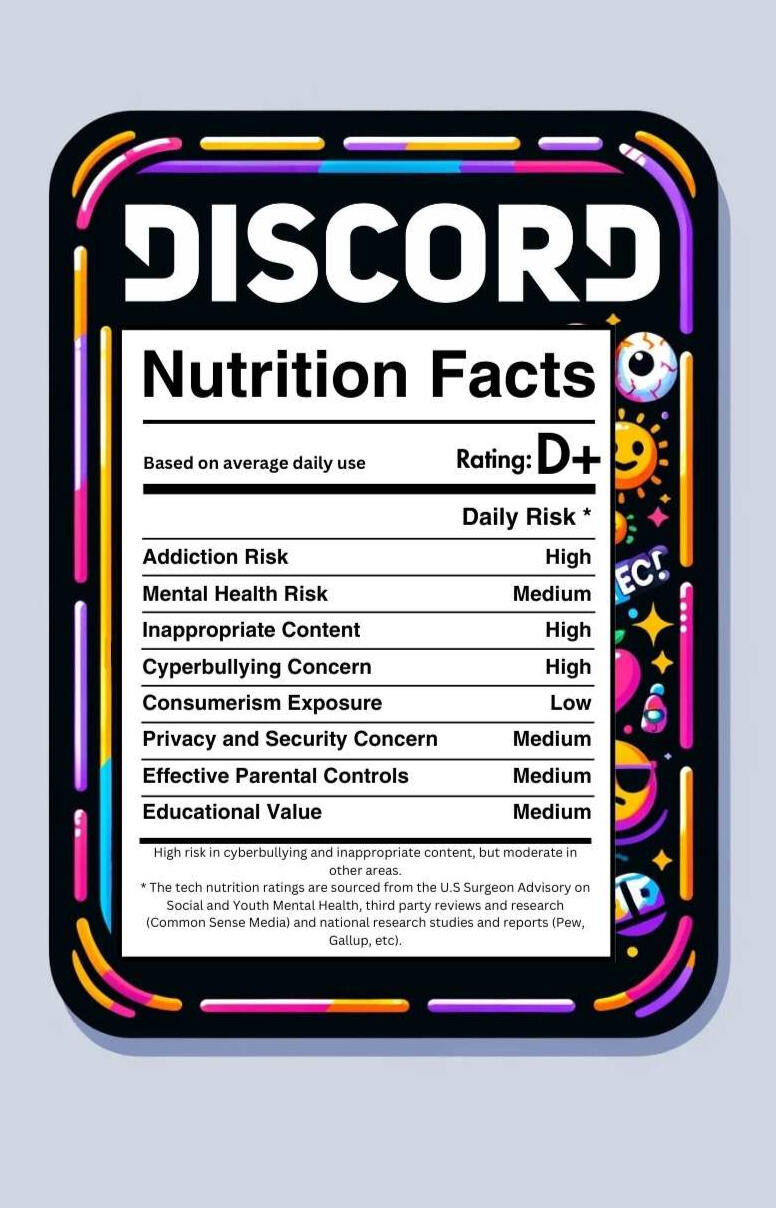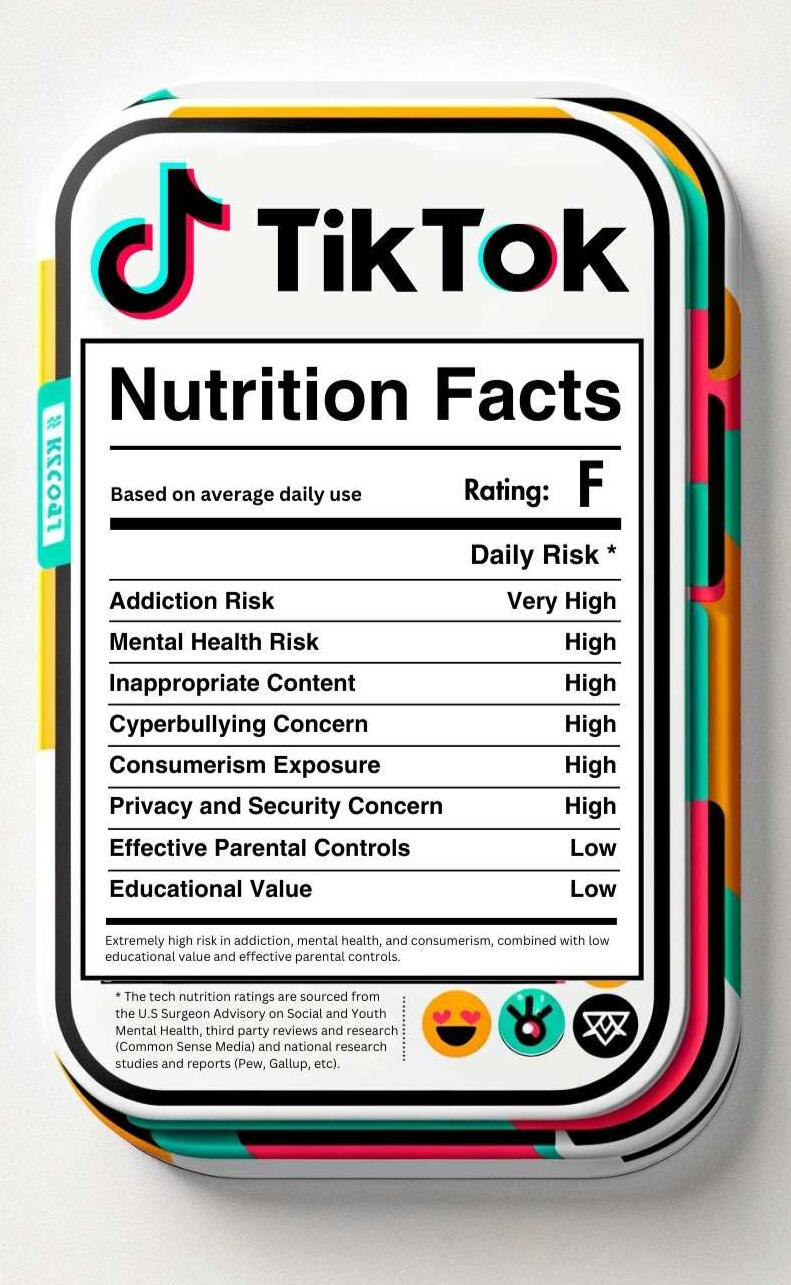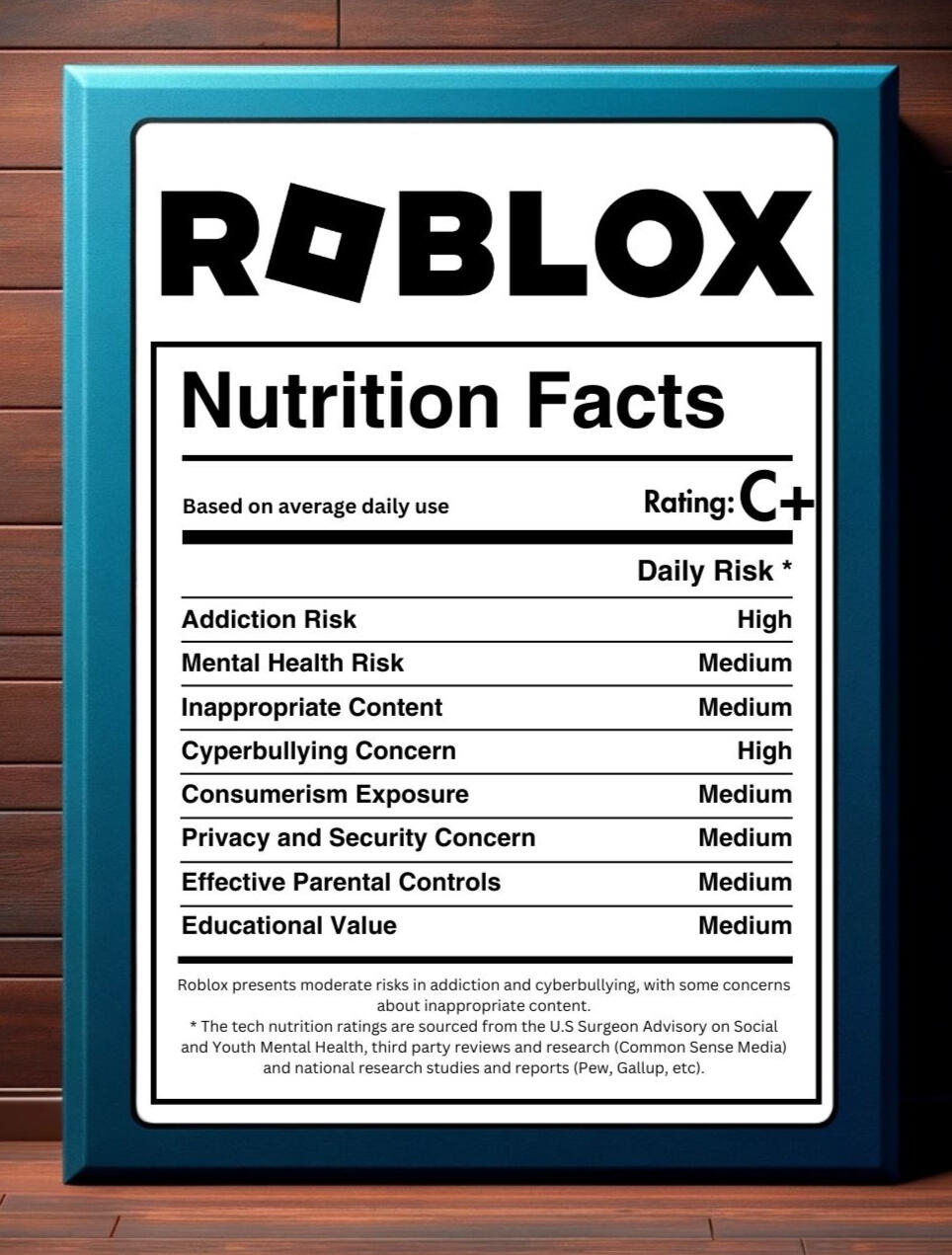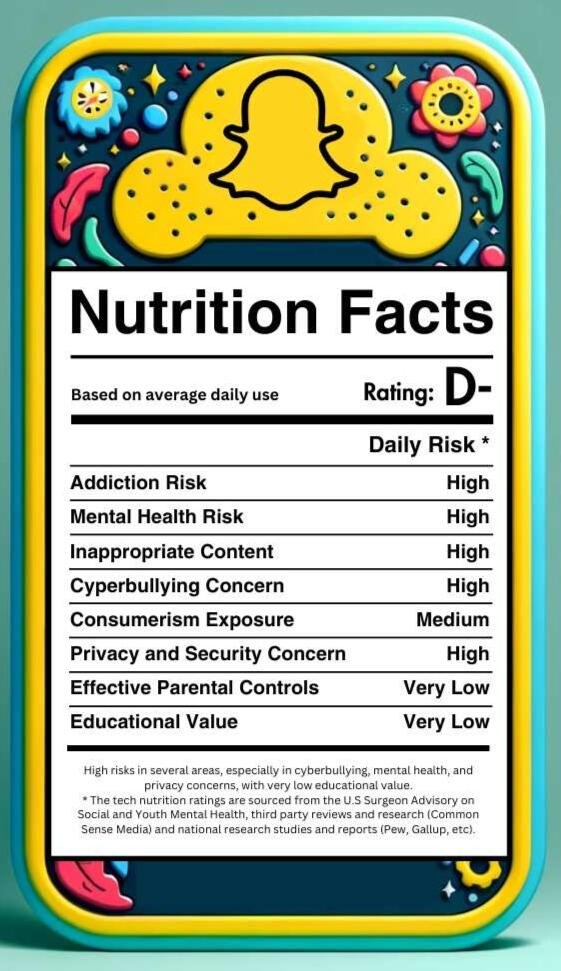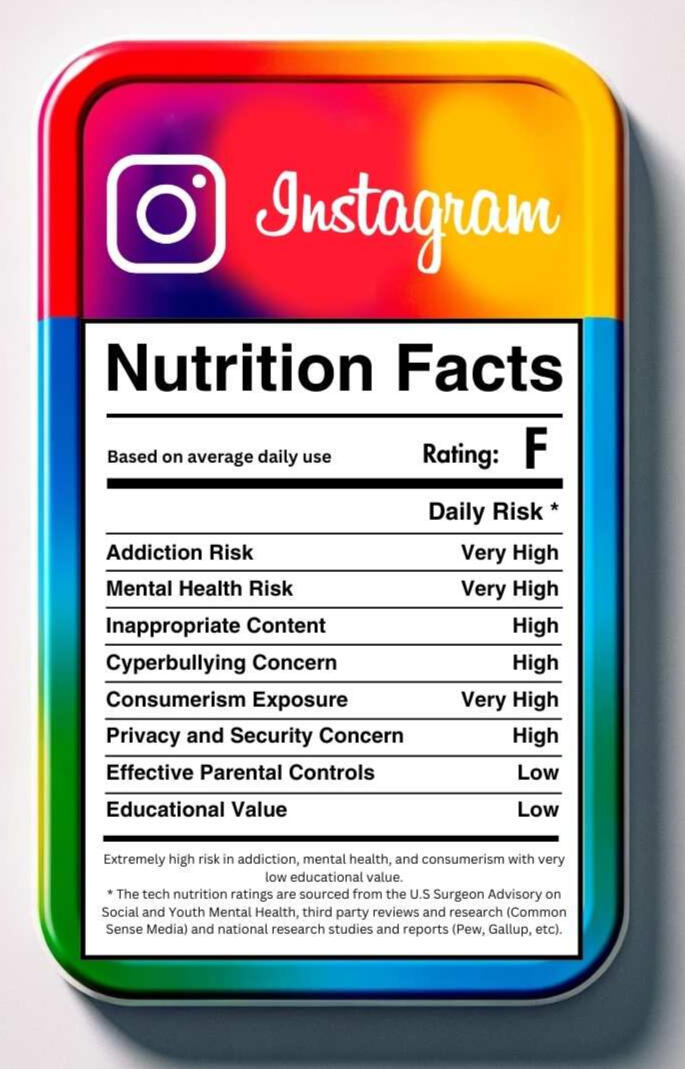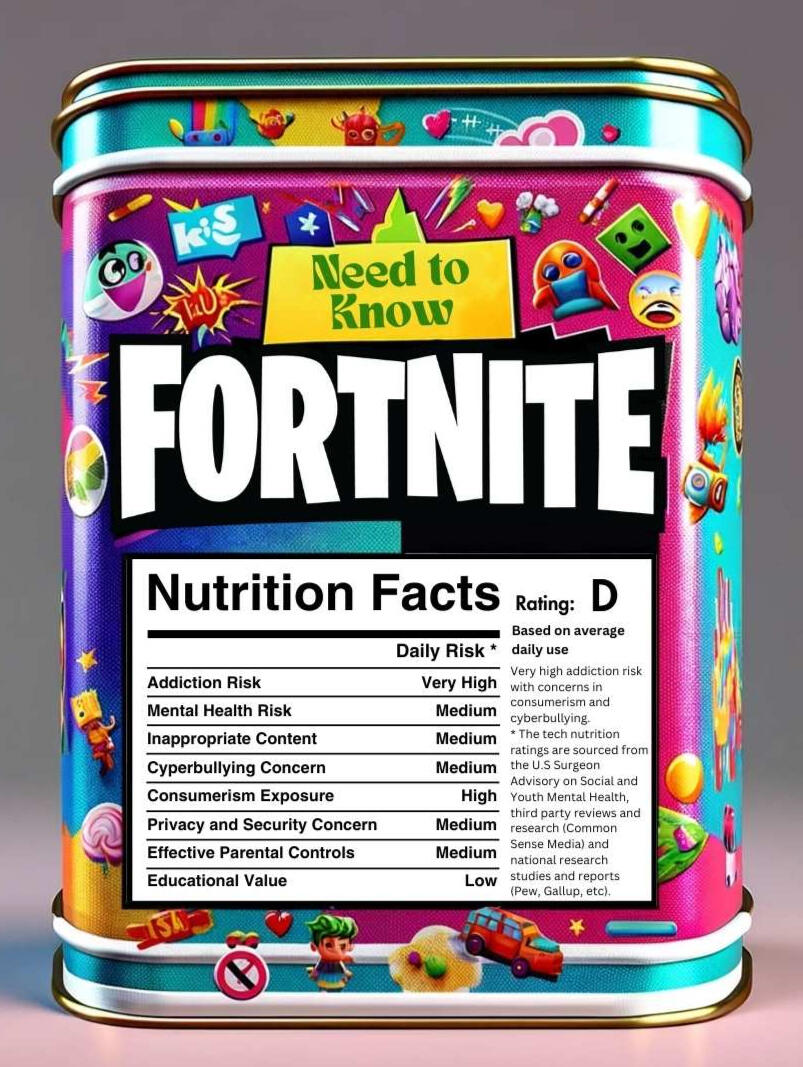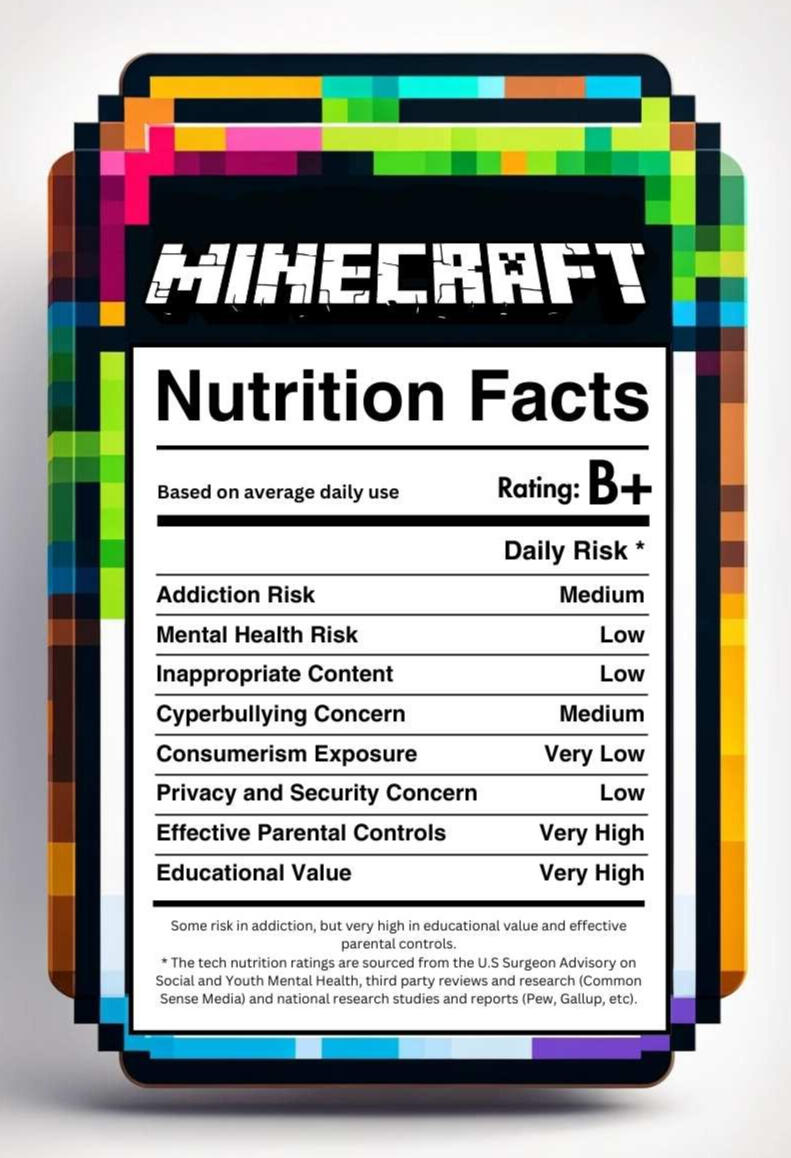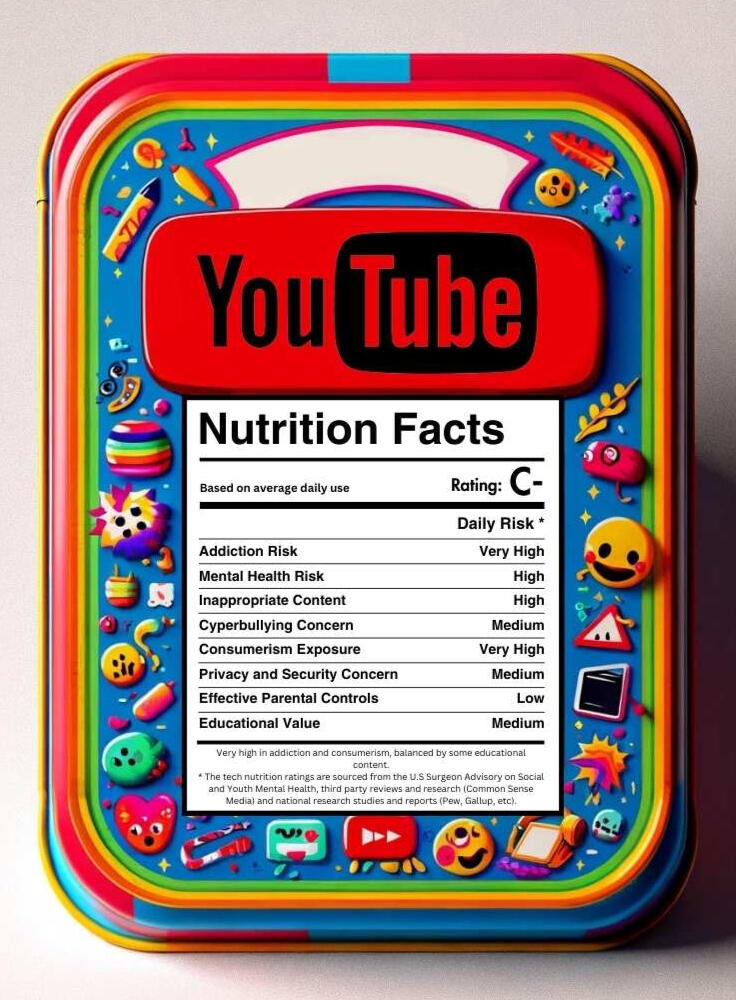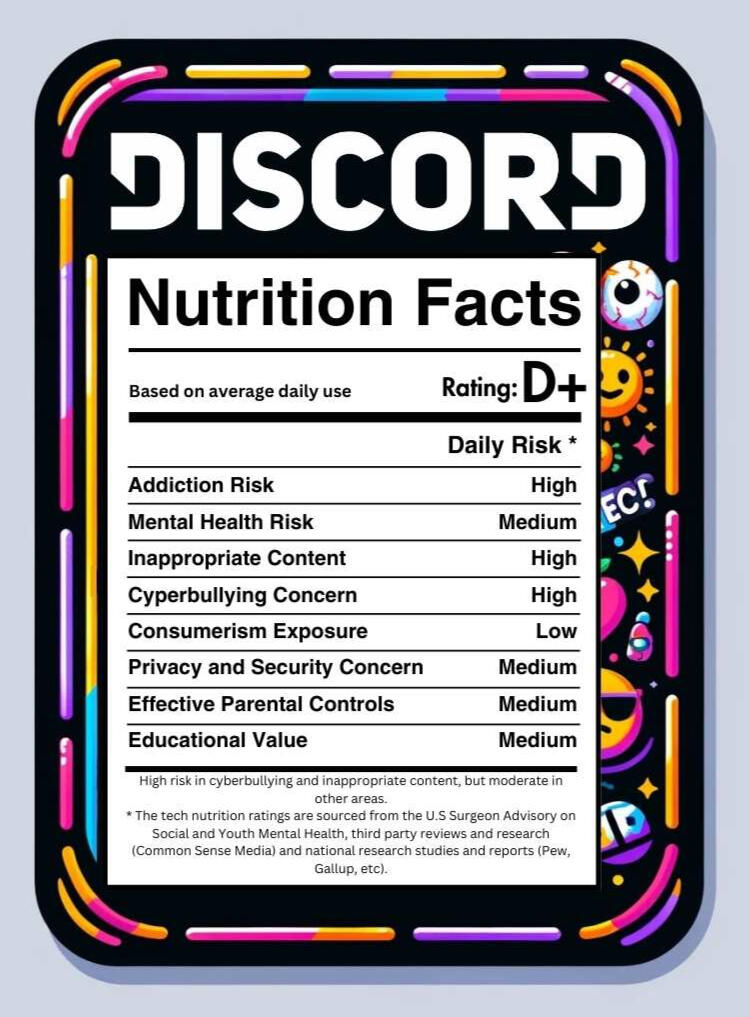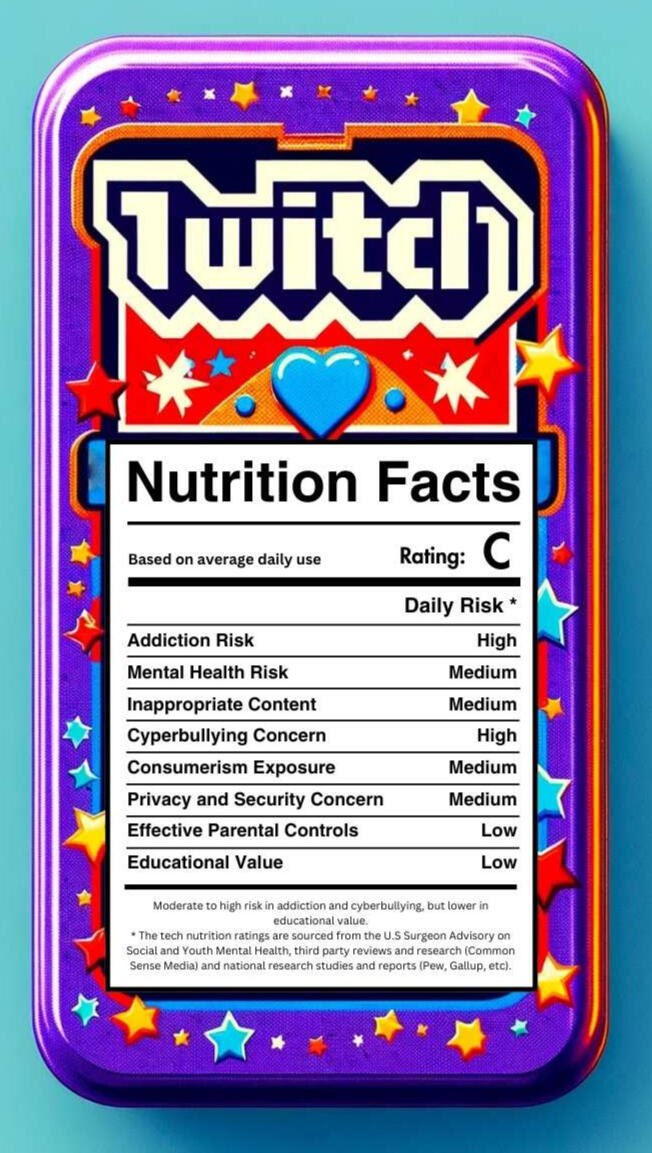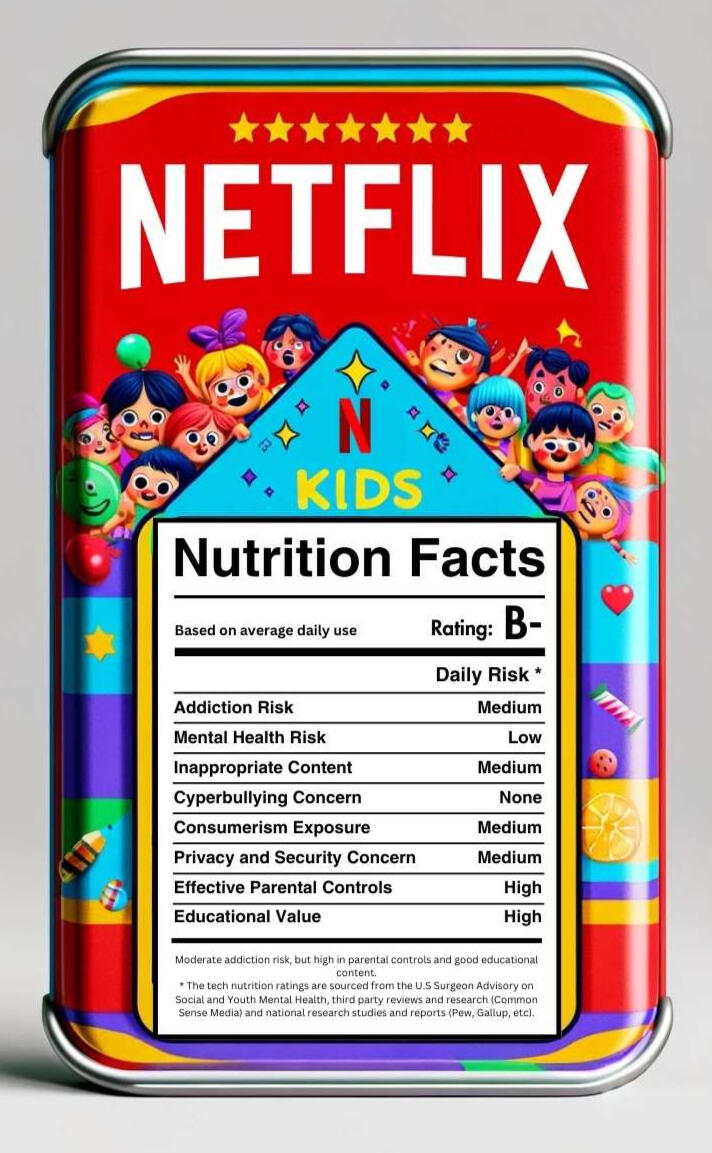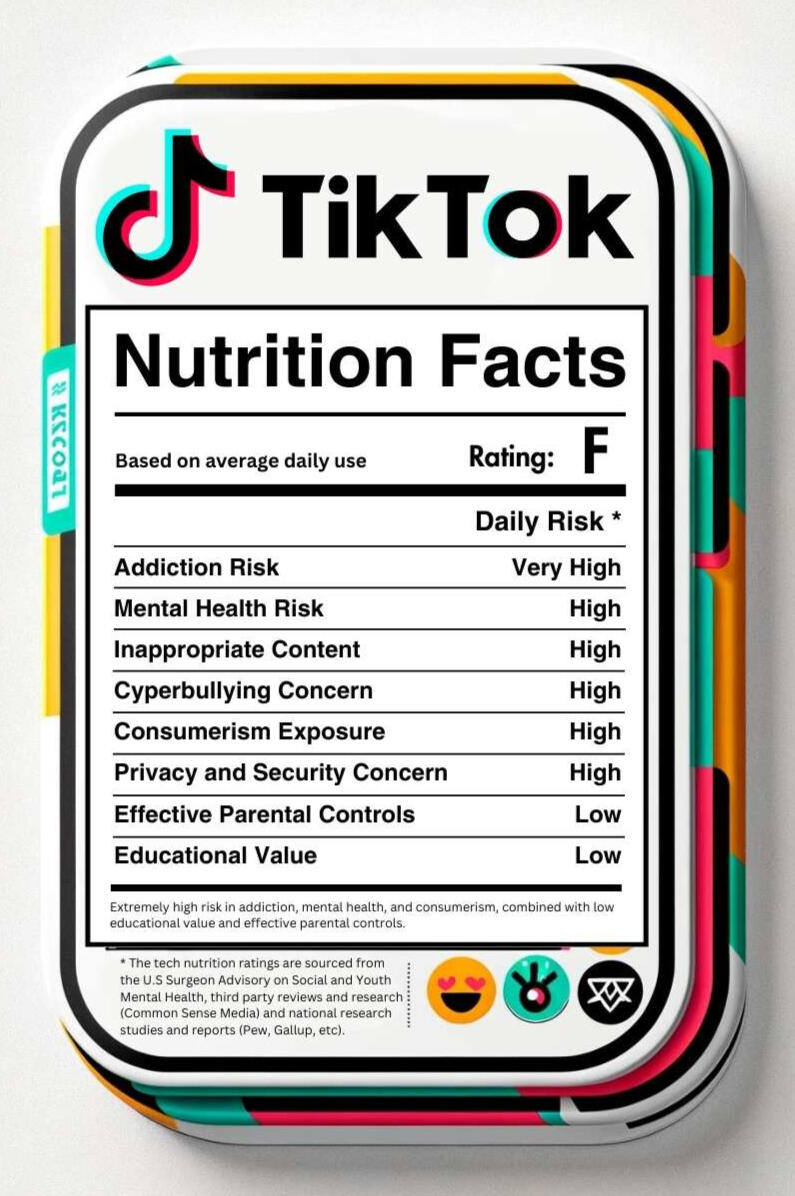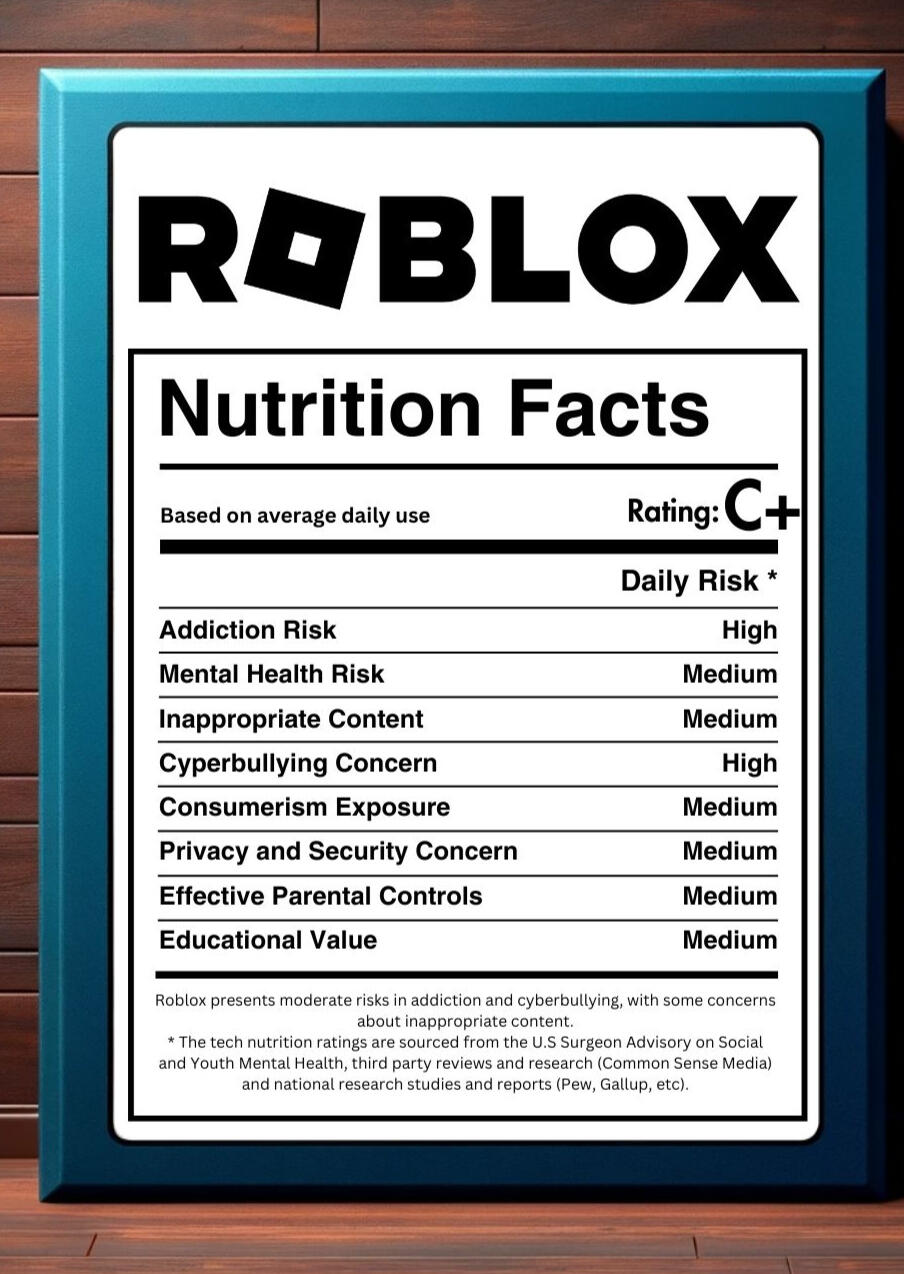Tech Nutrition
Tips for technology consumed by kids.
Sign up
Sign up here for updates! We’re launching more labels every week as well as workshops and resources for parents and their children. We would love to hear what guidance and tips would be helpful to you.
Methodology
The Tech Nutrition® ratings provided for platforms like Netflix, Snapchat, Minecraft, Fortnite, YouTube, Twitch, Discord, and Instagram are sourced from the following:(1) Corporations' Own Websites and Announcements:Official statements and user guidelines from the platforms themselves often provide information about features, privacy policies, and user safety measures.
Educational content, age-appropriateness, and advertising practices are typically outlined on these platforms' websites.(2) Third-Party Reviews and Research (e.g., Common Sense Media):Common Sense Media and similar organizations provide detailed reviews and ratings based on content appropriateness, educational value, and age suitability.These reviews often include assessments of privacy risks, exposure to advertising, and potential for cyberbullying.(3) General Observations and Public Discourse:Public discussions and media reports frequently highlight issues like addictive nature, mental impact, and social pressure associated with social media and gaming platforms.User experiences and anecdotal evidence shared in forums, social media, and other public platforms contribute to the understanding of bullying risk, interactive safety, and content appropriateness.(4) Research Studies and Reports:Academic and market research studies provide insights into user behavior, mental health impact, and other risks associated with digital media usage.
Reports on cyberbullying prevalence and online safety concerns are often cited in discussions about these platforms.
The following research studies have been sourced:
References
Twenge, J. M., & Campbell, W. K. (2018). "Associations between screen time and lower psychological well-being among children and adolescents: Evidence from a population-based study." Preventive Medicine Reports.Przybylski, A. K., & Weinstein, N. (2017). "A large-scale test of the Goldilocks hypothesis: Quantifying the relations between digital-screen use and the mental well-being of adolescents." Psychological Science.Kim, H. J., Min, J. Y., Min, K. B., Lee, T. J., & Yoo, S. (2019). "Association between psychological and self-assessed health status and smartphone overuse among Korean college students." Journal of Mental Health.Wartberg, L., Kriston, L., & Thomasius, R. (2020). "Internet Gaming Disorder and problematic social media use in a representative sample of German adolescents: Prevalence estimates, comorbid depressive symptoms, and related psychosocial aspects." Computers in Human Behavior.Wisniewski, P., Jia, H., Wang, N., Zheng, S., Xu, H., Rosson, M. B., & Carroll, J. M. (2016). "Resilience mitigates the negative effects of adolescent internet addiction and online risk exposure." Proceedings of the 2016 CHI Conference on Human Factors in Computing Systems.Livingstone, S., & Smith, P. K. (2014). "Annual Research Review: Harms experienced by child users of online and mobile technologies: The nature, prevalence and management of sexual and aggressive risks in the digital age." Journal of Child Psychology and Psychiatry.Hawi, N. S., & Samaha, M. (2017). "The relations among social media addiction, self-esteem, and life satisfaction in university students." Social Science Computer Review.Kowalski, R. M., Giumetti, G. W., Schroeder, A. N., & Lattanner, M. R. (2014). "Bullying in the digital age: A critical review and meta-analysis of cyberbullying research among youth." Psychological Bulletin.Mills, K. L. (2016). "Effects of Internet use on the adolescent brain: Despite popular claims, experimental evidence remains scarce." Trends in Cognitive Sciences.Guernsey, L., & Levine, M. H. (2015). "Tap, Click, Read: Growing Readers in a World of Screens." Jossey-Bass.
Instagram, a platform that thrives on visually appealing content, is not just about sharing moments; it's become a breeding ground for mental health concerns, particularly among the younger population. The constant exposure to idealized images and lifestyles can distort reality, leading to a range of psychological issues.Studies Highlighting the Mental Health RisksBody Image and Self-Esteem Issues: A study published in the Journal of Adolescent Health found a strong correlation between Instagram use and concerns about body image, particularly among young girls. The pressure to conform to unrealistic beauty standards can lead to negative body image and low self-esteem.Anxiety and Depression: Research in the Journal of Abnormal Psychology highlighted a significant link between heavy social media use, particularly platforms like Instagram, and increased levels of anxiety and depression. The curated nature of content can create feelings of inadequacy and social isolation.Addictive Patterns and Sleep Disruption: A study from the University of Pennsylvania indicated that high usage of Instagram and similar platforms can lead to addictive behaviors and disrupt sleep patterns, further exacerbating mental health issues.Social Pressure and Comparison TrapInstagram's environment, fueled by likes, comments, and followers, can create immense social pressure, particularly for teens. The platform often turns into a comparison trap, where users constantly measure their worth against the carefully curated posts of others, leading to feelings of inadequacy and low self-esteem.A Breeding Ground for CyberbullyingThe platform is not immune to cyberbullying, with numerous instances of online harassment and bullying reported. Such negative interactions can have long-lasting effects on young users' mental health.In Summary: Proceed with CautionWhile Instagram offers a platform for creativity and connection, its potential negative impact on mental health cannot be overlooked. Parents and users are urged to approach this digital environment with caution, balancing online engagement with real-world interactions and maintaining a critical eye on the content consumed.
About Tech Nutrition
In today's fast-paced digital world, technology is a staple in our lives and the lives of our children. From educational apps to social media platforms, the digital environment our kids engage with every day is diverse and ever-evolving. As parents, it’s vital to understand not only the benefits but also the potential risks associated with these digital experiences.What Are 'Nutritional Facts for Technology'?Just like nutritional labels help us understand the contents of our food, "Nutritional Facts for Technology" aims to provide clear, concise information about various digital platforms and technologies. This initiative is designed to empower you, as parents, with knowledge about the digital "ingredients" your children are consuming. Our labels cover various aspects of technology usage, from addiction risk and cyberbullying prevalence to educational value and content appropriateness.Empowering Parents with KnowledgeOur goal is to offer a straightforward, easy-to-understand overview of popular digital platforms, including Minecraft, Instagram, Snapchat, and more. Each "Nutritional Fact" label uses a mix of text and emojis to convey information in a parent-friendly manner. Whether it's understanding the potential for addictive behavior on a gaming platform or assessing the educational value of a social media app, these labels are here to guide you in making informed decisions about your child's digital diet.Join Us in Making Digital Spaces SaferWe believe that awareness is the first step toward ensuring a safer and more balanced digital environment for our children. Explore our labels, learn about the different facets of digital platforms, and join us in creating a more informed community of digital-age parents.- Daniel Stedman, Founder and Senior Advisor
